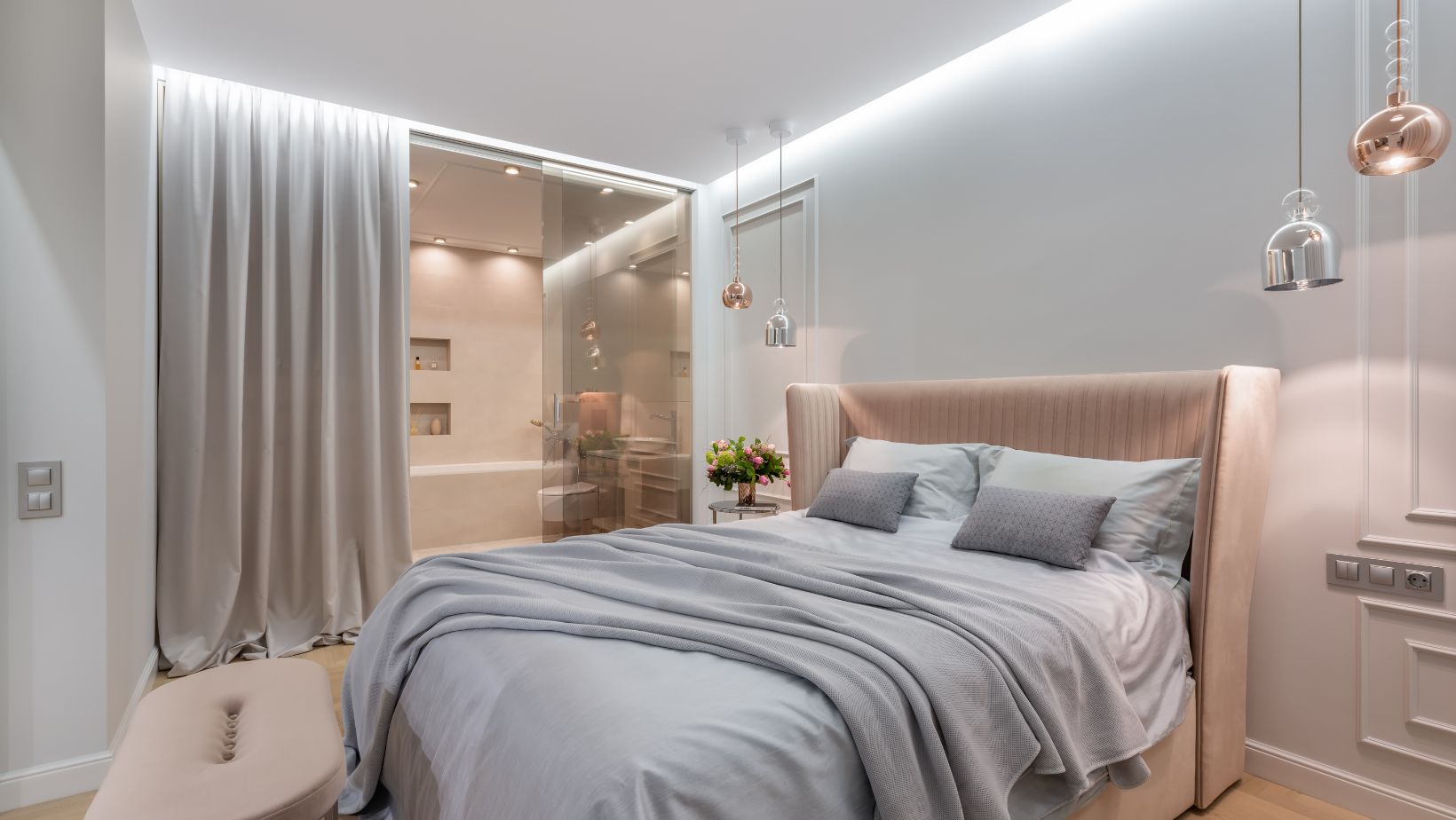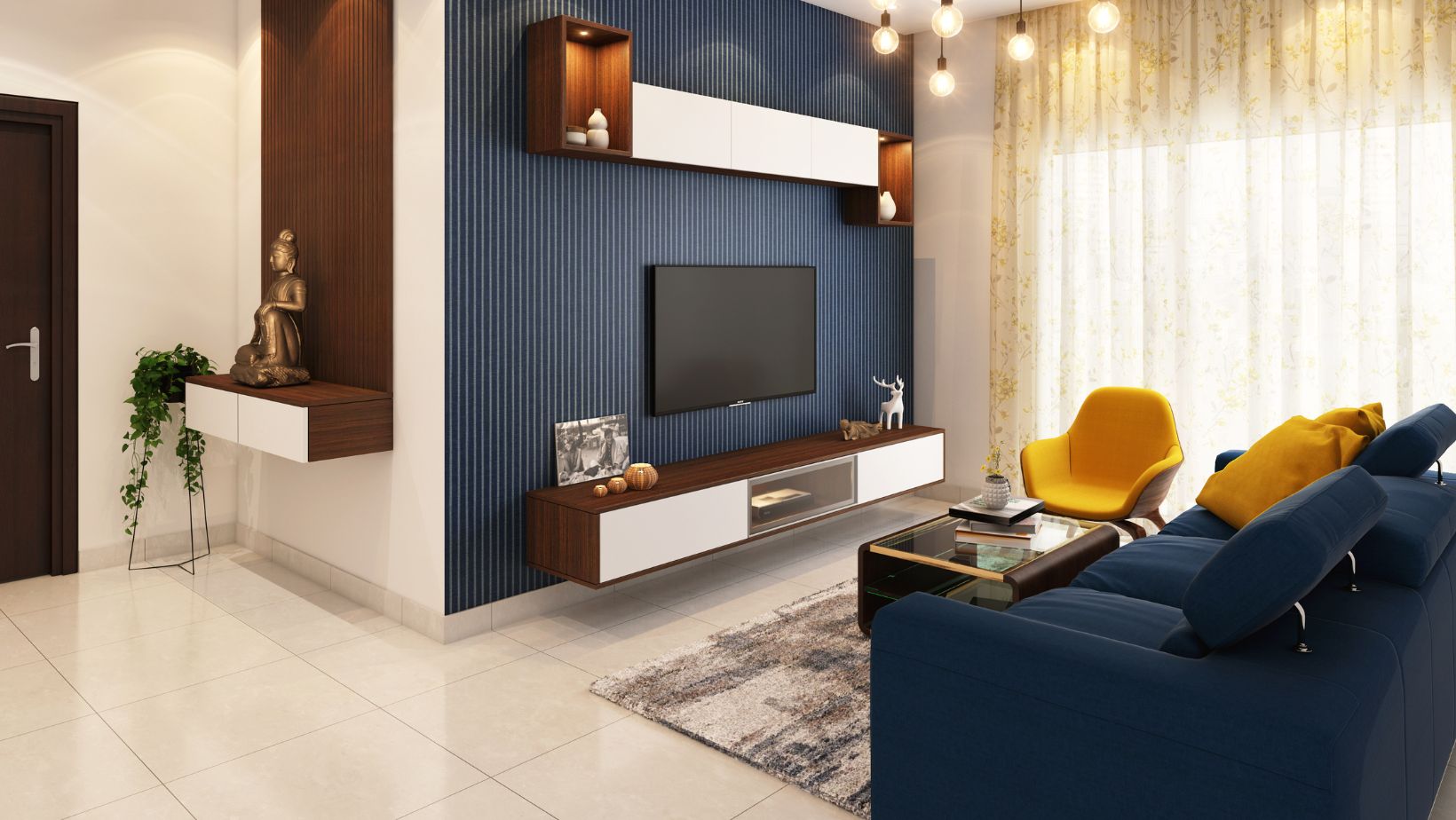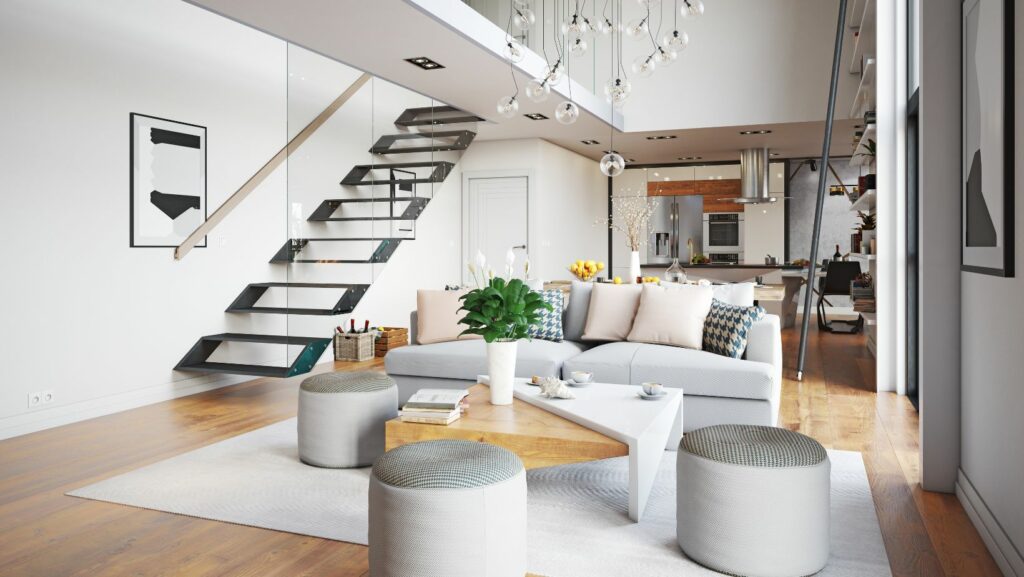Ever walked into a room that felt vast and open, yet somehow… cold and unwelcoming? Or a space so minimalist it bordered on sterile? The quest for rooms that “breathe” – offering a sense of calm and spaciousness – is a common design goal, but it’s a fine line to tread before they feel empty and impersonal.
Creating interiors that feel airy yet warm isn’t just about removing furniture – it’s about intentional design choices that balance openness with personality. This delicate equilibrium can transform your home from simply spacious to genuinely inviting.
A well-designed room that breathes properly can significantly impact your mood, reduce stress levels, and create a truly restorative home environment. It’s about making deliberate choices rather than just eliminating things.
The Foundation of Flow: Mastering Negative Space
Negative space – those empty areas between furniture and decor – isn’t wasted space. It’s an active design element that allows other features to shine while creating visual ease. Think of it as the pause between musical notes that gives a melody its rhythm.
Declutter with Intention, Not Deprivation
The goal isn’t stark minimalism but thoughtful curation:
- Focus on keeping items that truly spark joy or serve a purpose
- Implement the “one in, one out” rule to maintain balance
- Invest in storage solutions that conceal necessary clutter while adding style
“I encourage clients to think of decluttering as curating a personal museum rather than emptying a space,” says interior designer Emma Richards. “Each item should earn its place through beauty, function, or meaningful connection.”
Storage doesn’t have to mean sterile plastic bins. Woven baskets, vintage trunks, or built-in cabinetry can hide everyday items while contributing to your room’s aesthetic. Elements of rustic interior design work beautifully here – a weathered wooden chest or antique bread box brings character while containing clutter.
Strategic Furniture Placement for Open Pathways
How you arrange furniture is just as important as what pieces you choose:
- Create clear pathways that allow easy movement through the space
- Avoid pushing all furniture against walls; instead, create “zones” within larger rooms
- Ensure each piece has “breathing room” around it
In a living room, simply pulling the sofa eight inches away from the wall can instantly create a more open feel. Float furniture in conversational groupings rather than lining the perimeter like wallflowers at a dance.
Weaving Warmth and Personality: Beyond the Bare Minimum
A spacious room without warmth feels more like a waiting room than a home. The key is adding layers that invite without overwhelming.
The Tactile Trio: Texture, Textiles, and Natural Materials
Our sense of touch profoundly influences how we experience a space:

- Incorporate a variety of textures: smooth, rough, soft, hard
- Use textiles like rugs, curtains, throws, and cushions to add softness and visual warmth
- Integrate natural materials to ground the space and make it feel more inviting
Consider these specific combinations:
- Velvet cushions on a linen sofa
- A jute rug under a smooth coffee table
- Exposed wooden beams contrast with plaster walls
Rustic interior design shines in this aspect, offering rich textural opportunities through reclaimed wood, hand-forged metals, and natural stone. A farmhouse dining table with visible grain and knots brings immediate warmth to a minimal space without adding visual clutter.
Illuminating Ambiance: The Power of Layered Lighting
Lighting creates atmosphere more effectively than almost any other design element:
- Start with ambient lighting (ceiling fixtures, recessed lighting) for overall illumination
- Add task lighting (reading lamps, under-cabinet lights) for specific activities
- Include accent lighting (spotlights on art, uplighting plants) to create focal points
- Install dimmers wherever possible to control the mood
“Light should come from at least three sources in every room,” recommends lighting designer Marcus Chen. “Think of it as painting your space with light – some areas highlighted, others softly illuminated, creating depth and dimension.”
A rustic chandelier over a dining table or vintage-inspired sconces flanking a fireplace can serve as both functional lighting and statement pieces that anchor a room.
Color Psychology: Choosing Hues that Expand and Embrace
Color dramatically affects our perception of space and comfort:
- Light and neutral palettes serve as a base for airiness
- Introduce pops of color strategically through accessories, art, or an accent wall
- Choose warmer neutrals (creamy whites, warm grays, beiges) to prevent a sterile feel
A light blue-gray on walls creates an expansive feeling, while terracotta accents through pottery or textiles add immediate warmth. Natural, earthy tones prevalent in rustic interior design – from sage greens to burnt umbers – connect spaces to the outdoors while maintaining a cozy atmosphere.
The Art of Scale and Curated Collections: Filling Space Thoughtfully
How objects relate to each other and to the room itself creates either harmony or discord.
Furnishing for Fit: Avoiding the “Dollhouse” or “Warehouse” Effect
Scale matters tremendously in spacious rooms:
- Choose furniture proportionate to the room size
- Consider the height and visual weight of pieces
- In rooms with high ceilings, incorporate taller elements to draw the eye upward
In a large room with high ceilings, petite furniture can look diminutive and lost. Conversely, massive pieces can overwhelm smaller spaces. The goal is balance – perhaps a substantial sectional sofa balanced by airier accent chairs with visible legs.
Statement Pieces vs. Scattered Clutter
Impact comes from thoughtful selection, not accumulation:
- Invest in one or two significant statement pieces rather than many small items
- Group smaller decorative objects into cohesive vignettes instead of spreading them out
- Allow each important piece enough space to be appreciated

A large-scale piece of art, an architectural salvage piece, or a substantial rustic coffee table can anchor a room without cluttering it. This is where rustic interior design elements truly shine – a substantial live-edge dining table or an antique barn door repurposed as a headboard creates immediate visual interest while maintaining simplicity.
The Vertical Dimension: Drawing the Eye Upwards
Don’t forget the space above eye level:
- Utilize vertical space to add interest without cluttering the floor
- Install tall bookshelves, floor-to-ceiling curtains, or strategically placed wall art
- Consider architectural elements like exposed beams or interesting moldings
“Most people decorate only up to eye level, leaving a third of their room’s potential untapped,” notes architect Sarah Jensen. “Bringing elements up the wall creates a sense of grandeur while keeping floor space open.”
A collection of vintage mirrors or botanical prints arranged gallery-style draws the eye upward. Similarly, open shelving displaying a few carefully chosen objects adds dimension without overwhelming the space.
Conclusion
Designing rooms that breathe without feeling empty is an art of balance – blending negative space with warmth, strategic furniture placement with personal touches, and appropriate scale with curated focal points. The goal isn’t minimalism for its own sake, but intentional choices that create both openness and intimacy.
By embracing thoughtful curation over mere accumulation, and by layering textures, light, and meaningful objects, you can transform any room into an airy sanctuary that truly feels like home – a space that welcomes, rejuvenates, and reflects your unique story.
Remember that your home should feel like a deep breath – neither so cluttered that you can’t inhale fully, nor so empty that the exhale echoes. Find your perfect balance, and your rooms will truly breathe with life.
